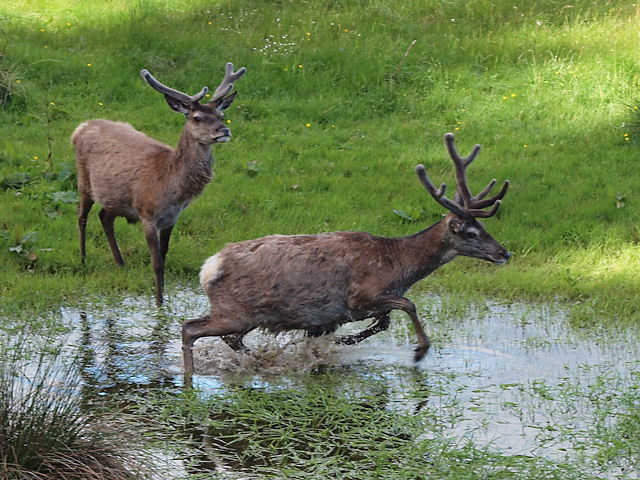This panorama shows part of the forest to the east of Guisachan farm which I have been surveying for Red Squirrels this last year. Beyond the top of the image is mostly open hill.
If you click on the image it will open in a new browser window and you can pan through the detail.
The mature timber stands consist of Norway Spruce, Sitka Spruce, Larch, Scots Pine and some Douglas Fir.
Young stands are Sitka Spruce and Larch. Around the margins and on water courses and wet areas there are deciduous shrubs and trees such as Willows, Birch, Aspen, Hazel, Beech, Lime, Oak and some granny Pines. The under storey is a mix of grass, bracken and herbs with heath higher up.
Squirrels feed mostly in the Norway Spruce and Larch. Most feeding is in the canopy with some ground feeding in undisturbed areas and ground activity is generally limited to areas with thicker ground cover.
I would consider this area to have a robust population of Red Squirrels up to an elevation of around 200 meters. Beyond that they are less in evidence.

















